A Guide On How To Grow Your Own Tomatoes At Home
Tomatoes are one of the most popular choices when it comes to growing your own fruit and veg at home. Whether you decide to grow your plants from seed, or to purchase a starter plant, these bright and colourful fruits are great for both seasoned gardeners and budding beginners. If you are looking for a way to get children involved in the garden, then this is definitely the place to start. Take a look at our handy guide on everything you need to know for growing your own tomatoes this year!
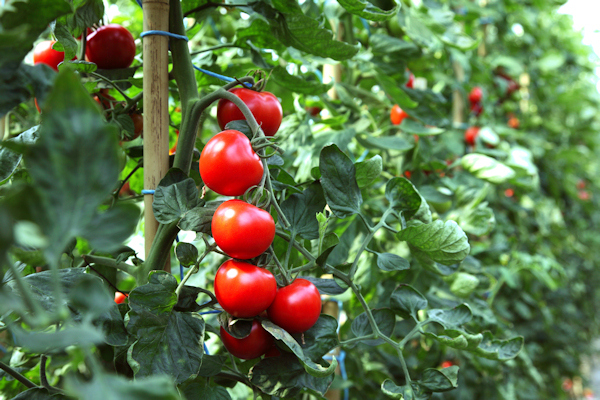
Varieties of tomato plant
Tomato plants come in one of three forms – cordons, bush or trailing. Depending on where you plan on growing yours and the space you have available will influence the type you choose to grow.
Cordon tomato plants are tall, with a single central stem that needs to be supported as it grows. Side stems need to be ‘pinched out' (in other words, removed) as the plant grows, so that that all its energy can be focused into producing fruit. You may sometimes see cordon tomatoes referred to as ‘indeterminate' types.
Bush tomatoes have more than one stem and grow into rounded bushy plants. They are easier to grow than cordon tomatoes, as they need very little in the way of supports and no pinching out. They're ideal for growing in pots. Bush tomatoes are sometimes referred to as ‘determinate' types.
Trailing tomatoes are a form of bush tomato with long, draping stems, ideal for growing in hanging baskets.
Where to grow your tomatoes
Will your tomatoes be outdoors or in a greenhouse? All tomatoes can be grown outdoors provided they're in a sheltered, sunny spot, but some varieties will perform better when grown in a greenhouse.
Popular greenhouse varieties:
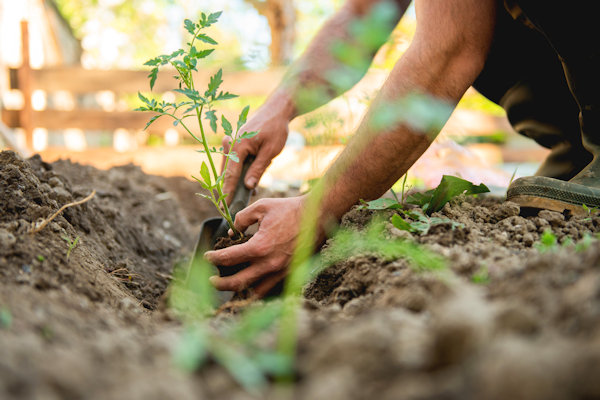
Moneymaker - Produces large crops, though the taste is a bit bland.
Alicante - Produces an abundance of fleshy, flavoursome fruits.
Best of All - For large fruits with fewer seeds.
Big Boy - A large beefsteak variety with a full flavour.
Outdoor grown varieties:
Gardener's Delight - For bite-sized tomatoes with a tangy flavour.
Ailsa Craig - Produces delicious medium-sized fruits.
Red Alert - Produces an early crop of small, tasty tomatoes.
Pixie - An early cherry tomato variety that's ideal for patios.
Find a range of tomato plants at Longacres, here.
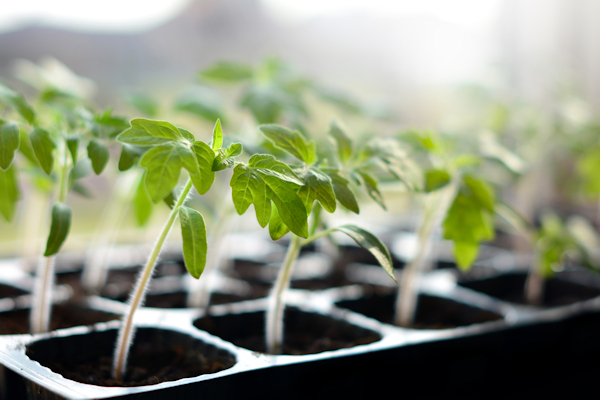
Growing from seed
Tomatoes need warm conditions from the outset, at least 18°C, as they are natives of tropical regions.
If you're growing from seed and you have a heated greenhouse, you can start sowing seeds there at the turn of the year. Alternatively, a warm, sunny windowsill indoors will work just as well. If your greenhouse doesn't have heating, then wait until February to start sowing.
Sow the seeds thinly in seed trays and cover them lightly with sieved compost. We recommend John Innes Seed Sowing for this.
Keep them moist – without overwatering – and cover them with clingfilm or with glass and a sheet of newspaper after watering to keep the humidity level high.
Once the seeds have germinated, remove the clingfilm or glass to improve ventilation.
When the seedlings are big enough to handle, remove them carefully from the tray using a small dibber and transplant them into individual 9cm pots with some John Innes No.1.
Continue to keep them moist and warm until they have matured and can be potted on.
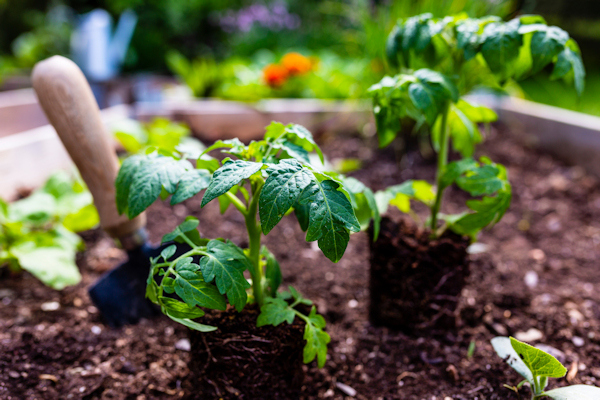
Potting on your tomatoes
Select the sunniest, most sheltered spot in the garden. If you are going to be planting in containers, use a good quality potting compost, such as John Innes No.2. If planting in the ground, dig in lots of well-rotted farmyard manure or compost before planting.
When the seedlings are at least 15cm tall, or when the first flowers are beginning to open, they can be moved to their final location. Starter plants purchased from your local Longacres Garden Centre will be ready for potting on once you have brought them home.
If you're going to grow them outside, be sure that the frosts have finished – probably in late May or early June.
Harden them off for a couple of weeks to help them get used to the different conditions (in other words, put them outside during the day and bring them in at night). A cloche will provide added protection if you are worried about wildlife or poor weather.
For tomatoes that will be ground outside, ensure each plant is at least 50cm apart to allow for root grown and foliage.
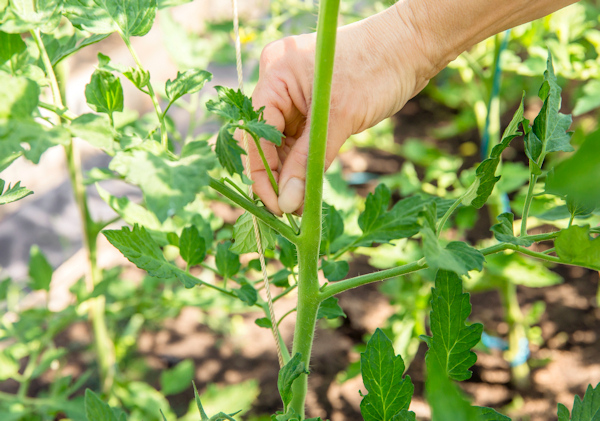
Caring for your tomato plants
It's very important to water tomatoes regularly, especially after the fruit starts to form. Letting the soil or compost dry out and then giving lots of water to compensate is likely to cause your tomatoes to split and rot.
Feed your plants every two weeks with a balanced liquid fertiliser such as Miracle Gro Performance Organic Fruit & Veg Concentrate. Once the first small fruits start to develop, change to a high potash feed such as Tomorite.
Cordon tomatoes will need extra support with bamboo canes and garden wire to hold them in place as they grow. It is also recommended to pinch out any side shoots to preserve energy, as well as removing any yellow leaves too.
As soon as the stem has five trusses (clusters of smaller stems where flowers and fruit develop), pinch out the growing tip of the plant two leaves above the highest truss.
If growing your plants in a greenhouse, pinch out the tips when they reach the roof. Pinching will concentrate the plant's energy on developing the fruits you have, rather than trying to produce any more.
When growing bush tomatoes, there's no need to remove side shoots, but they may need a little support once the fruit starts to develop.
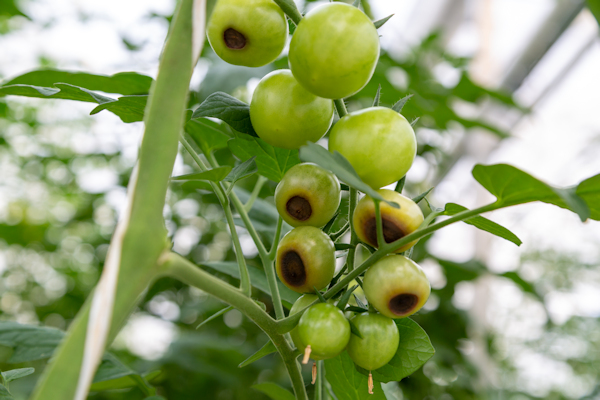
Common issues when growing tomatoes
There are a number of potential threats to your tomatoes, but the most common is blight – a fungal disease which loves the same warm, humid conditions which tomatoes thrive in.
The sign to look out for is chocolate-brown patches on the leaves; if you spot any, remove and destroy all affected areas immediately. There is no cure for blight, and it will quickly spread to the fruit and cause it to rot if you do not act quickly.
Harvesting your tomatoes
You should be able to start harvesting the fruits of your labour from the end of June if you have a heated greenhouse. Outdoor and cold greenhouse crops will be ready the following month.
It's easy to tell when they're ripe because they'll be all one colour.
There's no need to pick them all at once, though; you can leave the fruits on the vine for up to a fortnight until you want them. They taste much better that way!
The crops will come to an end in October. If there are still any fruits on the vine that haven't yet ripened, pick them and bring them indoors.
Top tip! To ripen green tomatoes once picked, put them in a paper bag with a ripe apple or banana. The ethylene given off by the fruit will encourage the tomatoes to ripen, usually in about 2 weeks.








